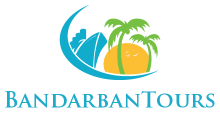In the early days of 15th century, Arakanese kingdom expended its territories to the Chittagong area of Bengal. After the victory of Arakan on Burma’s Pegu kingdom in 1599 AD, the Arakanese king Mong Raja Gree appointed a Prince of Pegu as the governor of newly established Bohmong Htaung (Circle) by giving the title of “Bohmong” Raja. That area was mostly populated by the Arakanese descendants and ruled by the Burmese (Myanmar) noble descendants who started to call themselves in Arakanese language as Marma. Marma is an archaic Arakanese pronunciation for Myanmar. As the population of the Bohmong Htaung were of Arakanese descandants, these Myanmar-desendants Bohmong chiefs (Rajas) of the ruling class took the titles in Arakanese and speak a dialect of the Arakanese language.
Bandarban Hill District was once called Bohmong Htaung since the Arakanese rule. Once Bohmong Htaung was ruled by Bohmong Rajas who were the subordinates to the Arakanese kings. Ancestors of the present Bohmong dynasty were the successor of the Pegu King of Burma under the Arakan’s rule in Chittagong. In 1614, King Mong Kha Maung, the king of Arakan appointed Maung Saw Pru as Governor of Chittagong who in 1620 repulsed the Portuguese invasion with great valour. As a consequence, Arakanese king, Mong Kha Maung adorned Maung Saw Pru with a title of Bohmong meaning Great General. After the death of Maung Saw Pru two successors retained Bohmong title. During the time of Bohmong Hari Gneo in 1710, Arakanese King Canda Wizaya recaptured Chittagong from the Mughals. Bohmong Hari Gneo helped King Canda Wizaya in recapturing Chittagong and as a mark of gratitude the later conferred on Bohmong Hari Gneo the grand title of Bohmong Gree which means great Commander in Chief.
During the British Raj, it was declared as the Bohmong circle with limited autonomy. The Mizokaba or the Mizo uprise in the mid 19th century was major catalyst for re-settlemet of the tribes in the area. During World War II the area saw the presence of a formidable British military presence that came to stand against a Japanese invasion. The tribes of these hills held the reputation of unyielding rebellion throughout history. When India]], Pakistan and Mynamar went independent from the Raj, the leaders of the tribes people decided unsuccessfully to become a part of Mynamar, then known as Burma. During the Bangladesh Liberation War of 1971 to gain independence from Pakistan, the leaders again sought unsuccessfully to remain a part of Pakistan.
In the late 1970s, a policy of forced settlement of Bengalis into hills was pursued, which later gave rise to much violence against the hill people and the insurgency led by Shanti Bahini, the military wing of Parbatya Chattagram Jana Sanghati Samiti. There have been an attempt to create divide among tribal cultural lines between the Chakmas, who led Shantibanhini, and the Mrus, by creating an anti-Shantibanhini militia out of them. Now, after the peace treaty, Bandarban stands as a locally governed ethnic region together with the two other hill districts. Representation of numerous tribes of the district in the Hill Council now stands as a thorn of dispute here.








